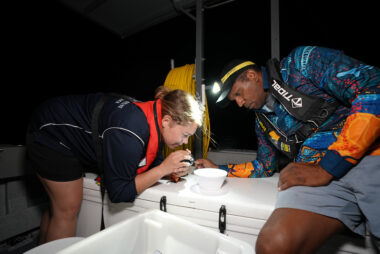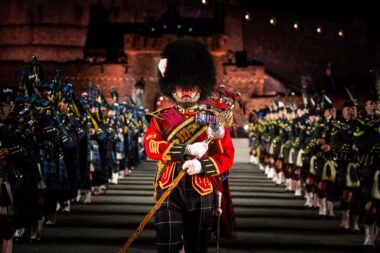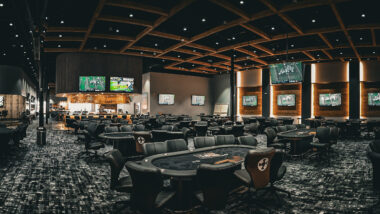Friday 16 August
Highlights from day 7 of National Science Week
Researchers, experts, and other interesting people available for interview around the country.
NSW: Space life meets art in zero gravity – Sydney
QLD: Should we 3D print pills? – Brisbane
TAS: Get hooked on Nature’s soap operas – Launceston
WA: Matt the Feral Cat: make and meet this feline fiend – Albany
TAS: Vaginal vignettes: Sex in the animal kingdom – Hobart
NT: 9-metre whale puppet tells ‘The Whale’s Tale’ – Darwin
VIC: How to grow a Martian garden – Bendigo
ACT: Ghost Trees: inside the ‘digital memory’ of trees – Canberra
SA: 3D Printing, VR, Robotics, Laser Cutting and more – Adelaide
QLD: When ‘bad’ fungi attacks: is there a doctor in the forest? – Julatten
Read on for more on these, including direct event contact details.
Also today:
- VIC: Craft to Code. Can circuit boards make music and did weaving produce the first computer code?
- SA: Herding caterpillars with Butterfly Conservation SA
Coming up tomorrow:
The Poo Palace; fun with rocket scientists; your brain on AI; sharks in Dubbo; and bird-spotters wanted – see a preview of Saturday’s highlights.
National Science Week 2024 runs from 10 to 18 August.
Visit ScienceWeek.net.au/events to find more stories in your area.
Media centre here. Images for media here.
General Science Week media enquiries: Tanya Ha, [email protected] or 0404 083 863
More about the event highlights
Tasmanian wildlife caught on camera – Launceston & Hobart, TAS
Ever wondered what Tasmanian devils, quolls, wedgies, and barred bandicoots get up to when no one’s watching? Explore the hidden lives of Tasmania's wildlife at the Tasmanian Land Conservancy’s camera trap photo exhibition.
Researchers work in partnership with citizen scientists and local landholders to set up motion sensor camera traps to monitor animals. See the images they captured that show the unseen dramas, quirks, and delights of Tasmanian wildlife. Each photo is accompanied by personal stories from the photographers and scientific insights into the species' behaviours.
Launceston: Friday 16 August – Saturday 17 August. Event details: www.scienceweek.net.au/event/camera-trap-chronicles-a-photo-exhibition-of-tassies-wildlife/invermay
Hobart: Friday 23 August - Saturday 24 August. Event details: www.scienceweek.net.au/event/camera-trap-chronicles-a-photo-exhibition-of-tassies-wildlife/hobart
Media enquiries: Daniel McMahon, [email protected] or 03 6225 1399.
Scientists available for media interviews. Images available.
Space life meets art in zero gravity – Sydney, NSW
Australia’s first female astronaut, Katherine Bennell-Pegg, and multidisciplinary artist/engineer, Xin Liu, share perpectives on how the human body adapts to zero gravity.
While neither have actually travelled in space, they separately experienced the challenges of weightlessness on parabolic flights that simulate zero gravity. In Bennell-Pegg’s case, during training at the European Astronaut Training Centre in Germany, and, for Liu, as part of the creative process for her performance work, Orbit Weaver.
‘Bodies in Space – Katherine Bennell-Pegg and Xin Liu’, in conversation with Columbia University Physics and Astronomy Professor Janna Levin forms part of the Sydney Science Festival, presented by Powerhouse.
Friday 16 August: www.scienceweek.net.au/event/bodies-in-space-katherine-bennell-pegg-and-xin-liu/ultimo
Media enquiries: Michelle Lollo, [email protected] or 0419 523 735.
Katherine Bennell-Pegg is also the Director of Space Technology at the Australian Space Agency. In this role, she is unlocking more pathways for Australians to be involved with human spaceflight, including through extensive public outreach encouraging women and girls to pursue STEM education and careers. National Science Week/Sydney Science Festival will be one of Bennell-Pegg’s first appearances since completing her training as an astronaut with the European Space Agency (April 2024), making her the first Australian woman to qualify as an astronaut.
Xin Liu is Arts Curator in the MIT Media Lab Space Exploration Initiative in Massachusetts, US.
Telescopes and TikTok: meet Indigenous astrophysicist and social media star Kirsten Banks – Albury, NSW
Gaze at stars, learn about Indigenous astronomy, and find out the secrets of black holes with Dr Kirsten Banks, a passionate astrophysicist and science communicator with a lifelong fascination for the cosmos.
Kirsten has pursued a life-long love for space, earning a PhD in astrophysics, and delving into the depths of the Milky Way galaxy. As a proud Wiradjuri woman, Kirsten explores the mysteries of the universe and honours the rich knowledge of her ancestors.
You’ll often find Kirsten sharing her love for astronomy and space with more than 500,000 followers across social platforms such as TikTok, Instagram and YouTube.
Friday 16 August. Event details: www.scienceweek.net.au/event/first-nations-astronomy-and-stargazing/albury/
Media enquiries: [email protected]
Design and 3D print pills: ask a pharmacist how and why – Woolloongabba
Ask pharmacist and 3D printing researcher Dr Jared Miles why 3D printed pharmaceuticals should be brought to the clinic. And design and print your own tablets.
Customisable colour, flavour, texture, and even braille or symbols play an important role in medication usage. For example, polypills with multiple active ingredients could reduce the mix-ups that often occur when people take several different drugs daily.
Following a talk from Jared, participants will take part in a workshop demonstration of 3D printing tablets facilitated by University of Queensland researchers, with the opportunity to design and print their own.
Friday 16 August. Event details: www.scienceweek.net.au/event/from-pixels-to-pills-why-we-should-be-3d-printing-medicines/woolloongabba/
Media enquiries: Liam Krueger, [email protected]
Scientists available for media interviews.
How to grow a Martian garden – Bendigo and multiple locations
Could you live in a Martian garden? Over the next 30 years, human missions to the moon and Mars are planned: but can these extreme environments provide habitat for humans?
‘The Martian Garden’ events across South Australia, Victoria, and Western Australia will invite the public to explore the challenges and try their hand at life beyond Earth at four activity stations while Mars rovers roam nearby.
Visitors will see plant growing cabinets similar to those on the International Space Station, they can code plant bots to harvest produce, find out what makes different foods suitable for space, and explore a range of space crops including duckweed, microgreens, tomato, strawberry and chilli.
Hear from ARC Centre of Excellence in Plants for Space researchers about selecting and adapting plant and microbial species to survive and thrive in new and extreme environments, how to support sustainable new ecosystems off-world, and how to find novel approaches back on Earth.
Bendigo: Friday 16 August. Event details: www.scienceweek.net.au/event/the-martian-garden-5/flora-hill/
Melbourne (Scienceworks): Saturday 17 to Sunday 18 August. Event details: www.scienceweek.net.au/event/the-martian-garden-2/spotswood/
Roseworthy, SA: Sunday 18 August. Event details: www.scienceweek.net.au/event/the-martian-garden/roseworthy/
Media enquiries: Lieke van der Hulst, [email protected] or 08 8313 6669; Frazer Thorpe, [email protected] or 0459 762 299.
When ‘bad’ fungi attacks: is there a doctor in the forest? – Julatten, QLD
Fungi are important to life on Earth, but some species can wreak havoc, attacking trees, crops and plants around the world.
Join ‘Forest Doctors’ scouting for sick trees impacted by pathogenic fungi.
Learn how to identify and collect specimens based on signs and symptoms of disease; isolate a pathogenic fungi from a living sample, and observe it under a microscope.
Did you know? Fungi are in a ‘kingdom’ of their own, being neither plants or animals.
Friday 16 August: www.scienceweek.net.au/event/forest-doctors/julatten/
Tracking cats, robot cars, drones, fossils, and more at Festival of Bright Ideas – Hobart
- Become a Nature Tracker and about Tasmanian threatened species, such as birds of prey, burrowing crayfish, bats and bitterns.
- Meet the microbiologist hunting the bad bugs, the tabby cat tracker, the astrophysicist creating virtual black holes, and other Young Tassie Scientists.
- Tap into 50,000 years of the Palawa Traditional Knowledge.
- ‘Drive’ a Sphero Indi, the cool little robotic cars that react to colours.
- Come face-to-face with Tassie wildlife, both land and marine creatures.
- Go fossil finding or see drones in action.
- Meet the feline friends and ferals from Ten Lives Cat Shelter and find out how to reduce the impact of cats on the environment.
- Connect with makers and tinkerers from Hobart Hackerspace.
These are just some of the speakers, activities and displays at the Festival of Bright Ideas, Tasmania’s largest public STEM event, at Princes Wharf 1 on Hobart’s waterfront.
Friday 16 August: Schools Day. Event details: www.scienceweek.net.au/event/festival-of-bright-ideas-3/hobart
Saturday 17 August. Event details: www.scienceweek.net.au/event/festival-of-bright-ideas-4/hobart
Media enquiries: Belinda Brock, [email protected], 0438 616 747



